#sphagnaceae
Text
Time for our non-vascular plant friends to get some love!
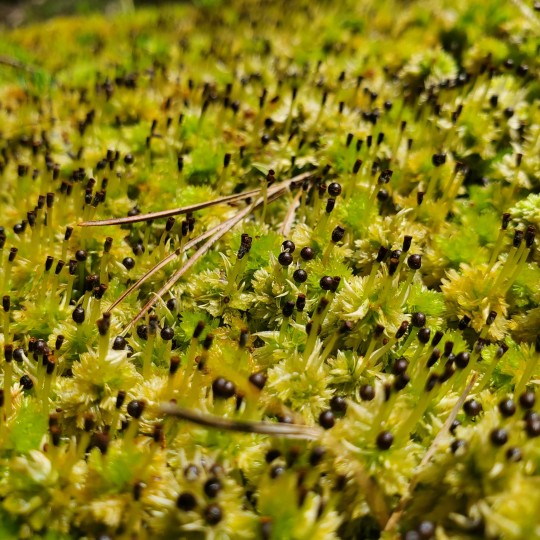
Today's plant is: some kind of Sphagnum!
Sphagnum is the primary contributor to peat deposits in bogs and fens worldwide. These wetlands have made a name for themselves in the last few years as both a quirky internet thing and as globally significant carbon sinks.
While sphagnum is known for being in bogs and fens, species of it grow in all kinds of habitats, provided there's a regular source of moisture. Case in point: I found these funky lil guys on a granite shelf on the side of a mountain in full sun!
You can tell this is sphagnum because of the spherical spore capsules and pyramid-shaped and tightly clustered capitulescence (fancy botany word for the top of the moss). I think they look a little bit star-shaped. These specimens were mid-spore release. All the brown dooblies on little green bracts are the spore carrying gametophytes.
Extra fun facts:
Sphagnum are really cool because they have something called "explosive dehiscence", which means their little spore capsules propel the spores by literally exploding open. I could actually hear them going off in the sun!
Sphagnum can hold 16 to 26 times their dry weight in water because of a matrix of large, empty, "dead" cells called hyaline cells. These cells have a pore that allows them to efficiently take on water — like little water jugs!
*I don't have a species ID for this because I was a) on national park property and don't have a permit to collect bryophytes and b) I frankly wouldn't have collected regardless because sphagnum ID is so! hard! And while I'm glad I know how to do it if need be, I don't do it recreationally--my hands are too shaky for microscopy and the keys are insane.
79 notes
·
View notes
Text
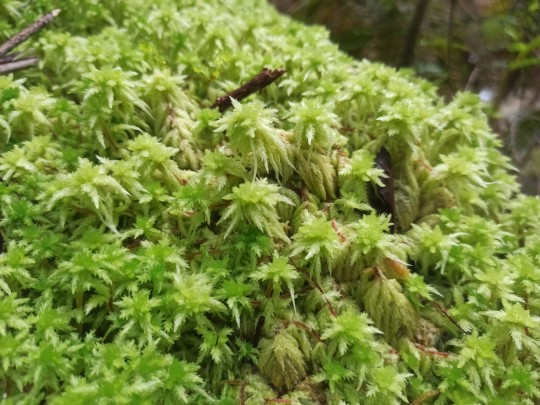
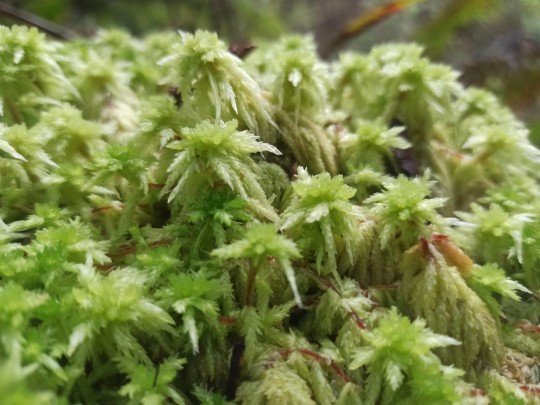
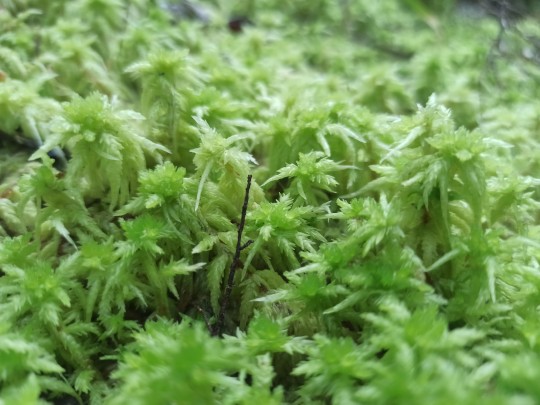
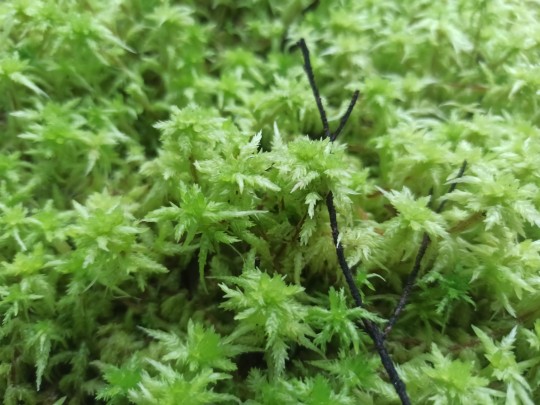
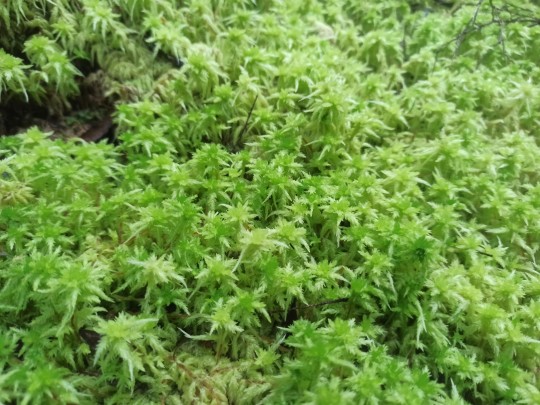
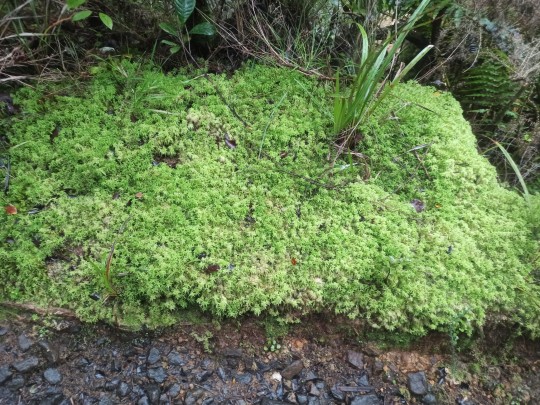
The Sphagnum cristatum (Сфагнум Гребенчатый) is similar to the Sphagnum palustre present in Australia and especially in New Zealand. It slightly differs from the Sphagnum palustre for a different cell morphology and for the tendency to develop more ruffled leaves.
Common Name: Sphagnum Moss. Family: Sphagnaceae. Original identification: Sphagnum cymbophyllum.
VHF4+3C5 Thames
-37.1273580, 175.5561060
В районе старых золотоносных шахт.
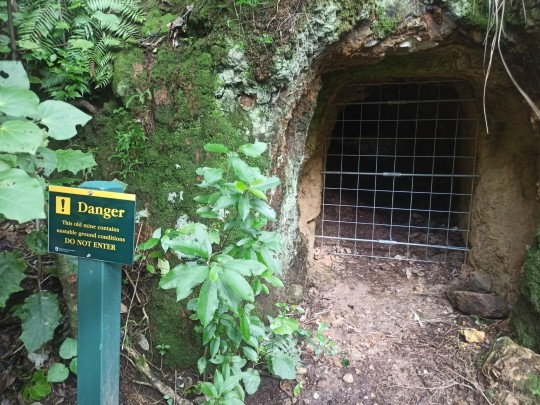
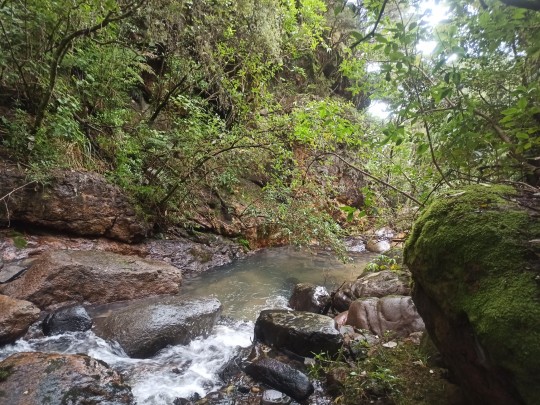

0 notes
Photo
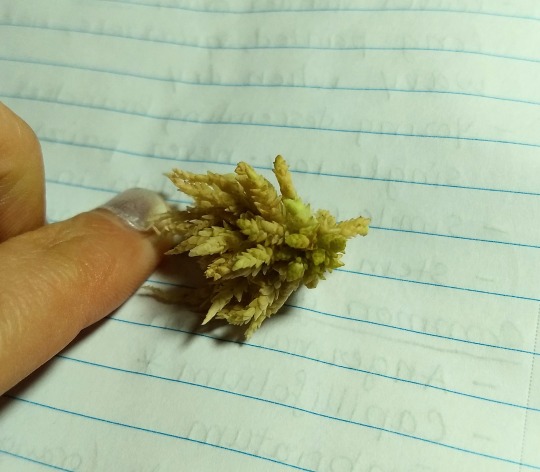
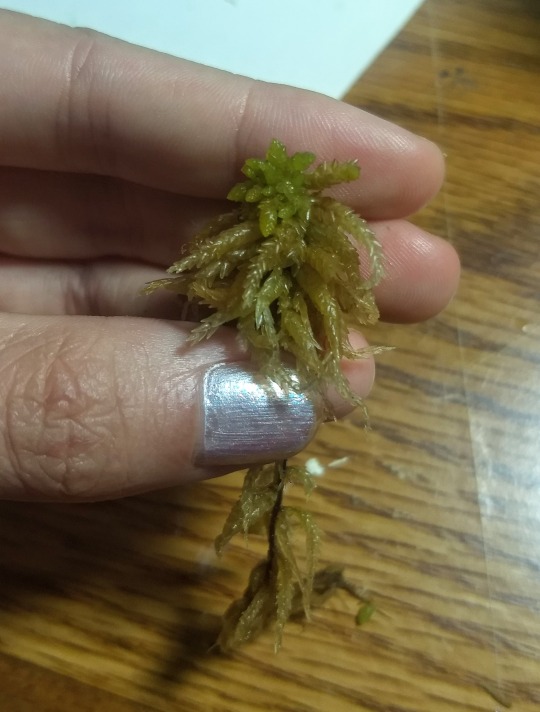


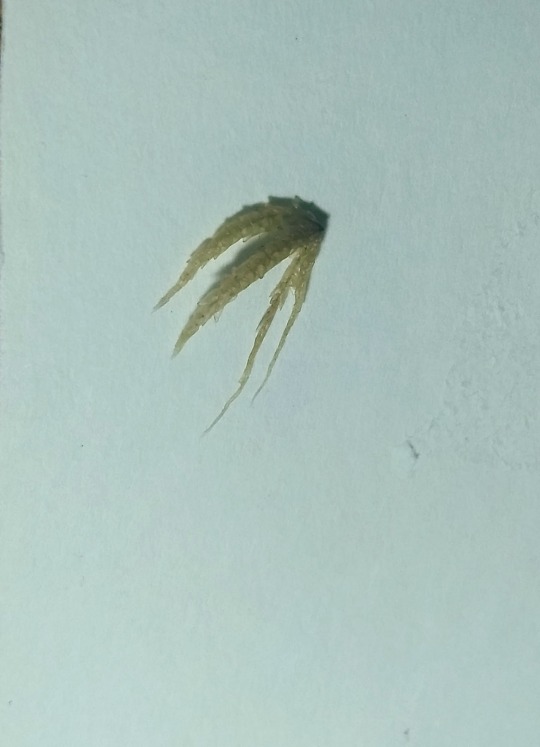
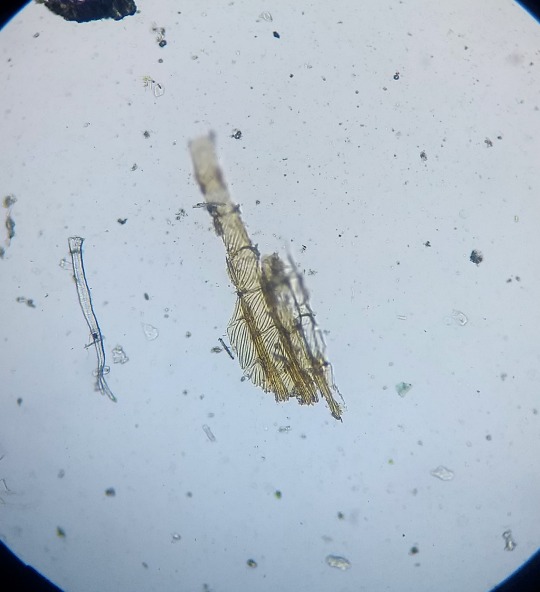
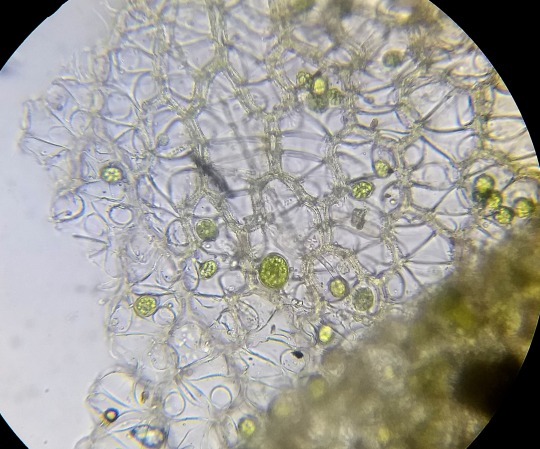
I have yet to find an ID for this sphagnum moss. I am quite sure it is in the section Sphagnum. But I don’t really have much experience identifying past section. Found in a classic low-nutrient bog in Eastern Massachusetts, alongside many other species of sphagnum, pitcher plants, sundew, high mountain blueberry, and cranberry.
#sphagnum#sphagnaceae#peat moss#sphagnum moss#plant identification#plant id help#plant id needed#bog#botany#bryophytes#bryology#help me what is this
12 notes
·
View notes
Text
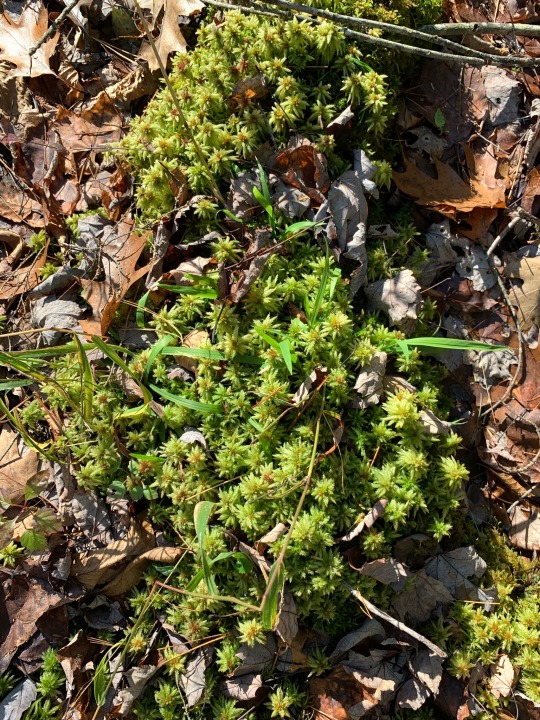
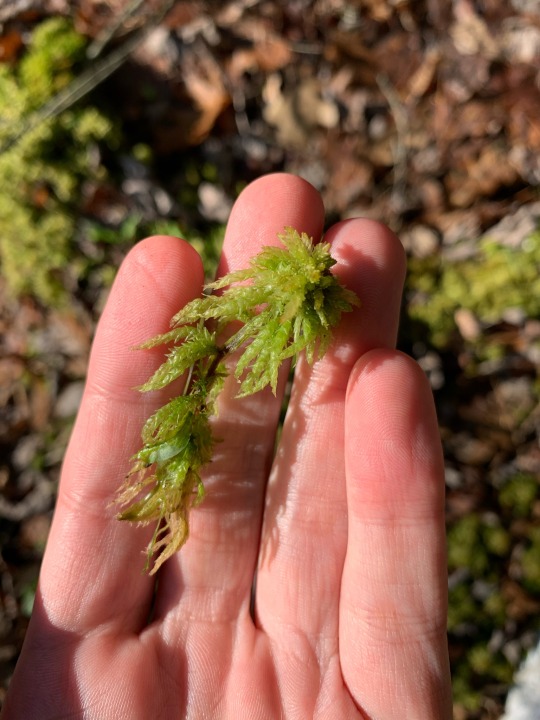
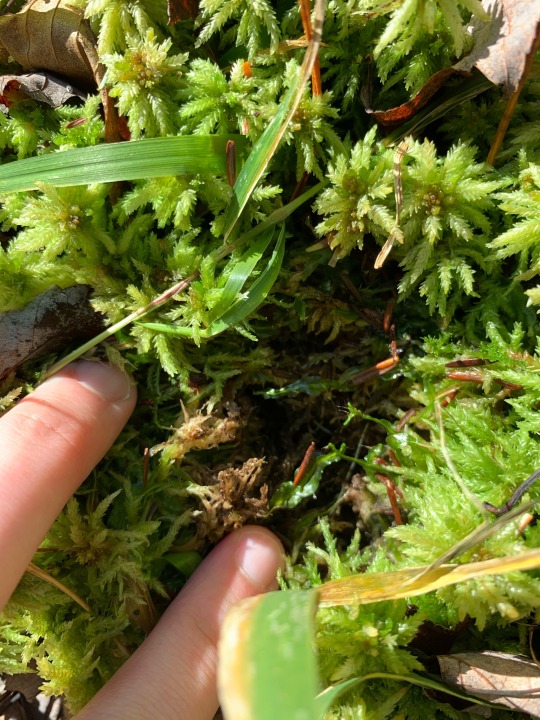
Sphagnum sphagnum | Sphagnum Moss
Plant Community: Red Maple Swamp
Type: Moss
Family: Sphagnaceae
Native Status: Northern Hemisphere; Native
Mature Size: Height < 4″| Spread <1″
Habitat / Conditions: Found in wet and boggy areas, likes acidic (low pH) soil, generally not found growing in the woods or in water that contains lime. Sphagnum Moss requires very damp growing conditions. It prefers the open, heathy areas of the bog, often in areas with limestone bedrock.
Hardiness Zone: 3 - 9
Leaf Color: Light Green (can be dark green, pink, or red)
Flower Color / Bloom Time:
Medicinal Properties:
The whole fresh plant is antiseptic. Because of its absorptive properties, it makes an excellent wound dressing and has been widely employed for this purpose in the past. Its use is said to have saved the lives of thousands of soldiers in the First World War. The moss is dried thoroughly before use. A tar extracted from the decaying moss is antiseptic and is seen as a valuable external application in the treatment of eczema, psoriasis, pruritus and many other forms of skin diseases. It is very beneficial for allaying irritation from insect bites and can also serve as a preventative to being bitten.
Sources:
https://pfaf.org/user/Plant.aspx?LatinName=Sphagnum
http://www.bio.brandeis.edu/fieldbio/Survival/Pages/sphagnummoss.html
https://carnivorousplantnursery.com/products/sphagnum-moss-red
https://en.wikipedia.org/wiki/Sphagnum
0 notes
Text
SPHAGNUM (PEAT MOSS OR BOG MOSS)
SPHAGNUM (PEAT MOSS OR BOG MOSS)
SPHAGNUM(PEAT MOSS OR BOG MOSS)
CLASSIFICATION OF SPHAGNUM (PEAT MOSS OR BOG MOSS)
Kingdom :- Plantae
Division :- Bryophyta
Class :- Bryopsida
SUB CLASS :- Sphagnidae
Order :- Sphagnales
Family :- Sphagnaceae
Genus :- Sphagnum
All the 11 species of Sphagnum found in India are restricted to the Himalayas. The plants are aquatic or semi-aquatic forming dense cushions commonly seen in swamps,…
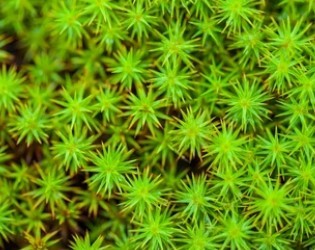
View On WordPress
0 notes
Text


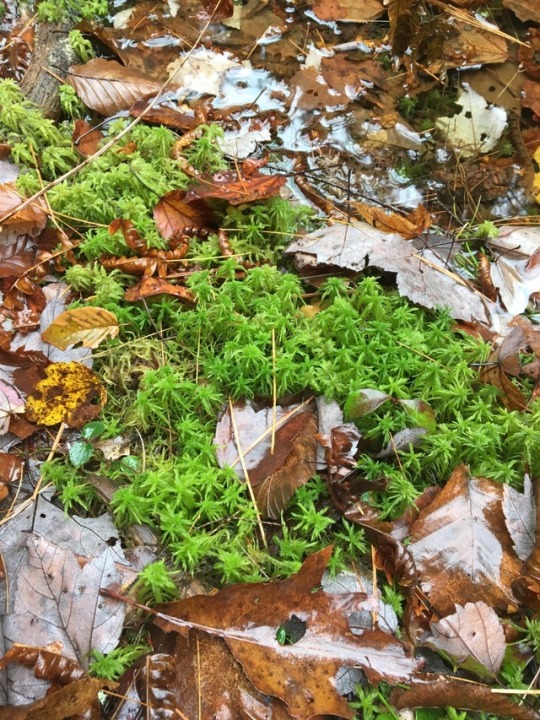
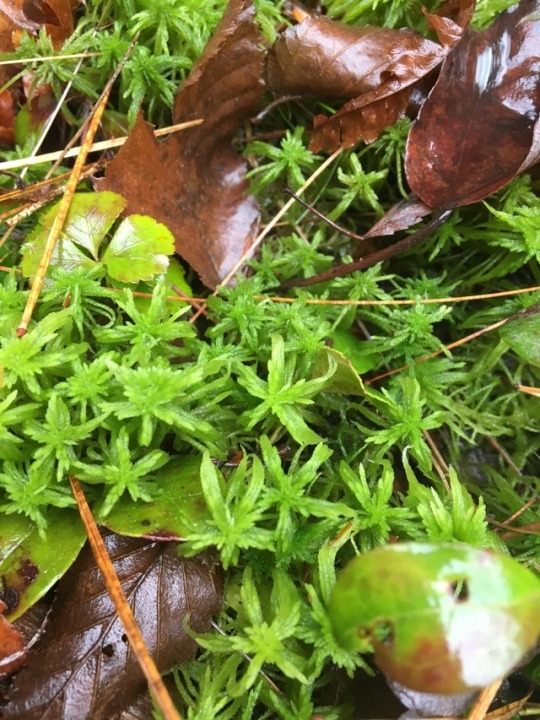

Sphagnum spp. - Sphagnum Moss
Family: Sphagnaceae
Native region: North America
Height and Width: 00.00 to 00.25 feet, 00.00 to 01.00 feet
Zones: 2-9
Indicator: N/A
Plant Community: Red Maple Swamp
Munch or Murder? Munch, i guess! The taste not might be flavorful or pleasant, but sphagnum moss is not toxic to humans, nor is any part of the moss.
https://pfaf.org/user/Plant.aspx?LatinName=Sphagnum+cymbilifolium
http://www.bio.brandeis.edu/fieldbio/Survival/Pages/sphagnummoss.html
https://plants.usda.gov/core/profile?symbol=sphag2
0 notes
Photo
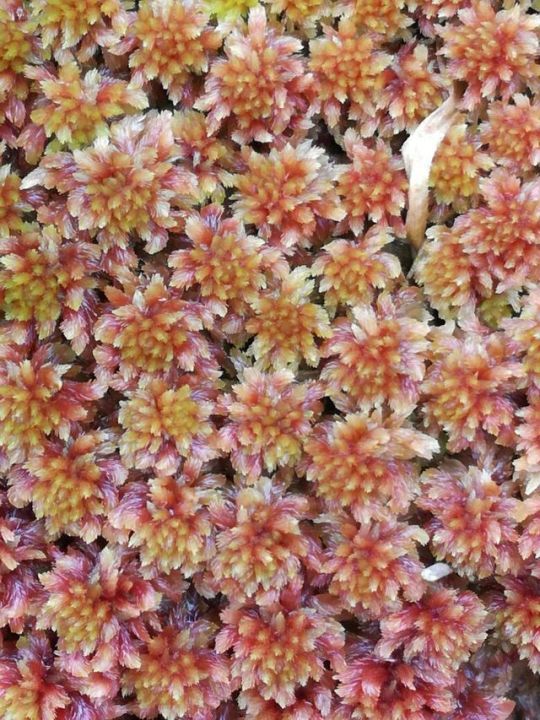
PH: Viviana Alexandra Henao Sanchez
Localidad: Parque ecológico Matarredonda, Páramo El Verjón - Entre Bogotá DC, Choachí y Ubaque, Colombia.
Coordenadas geográficas: 4°35'15.7"N 74°00'19.7"W
Fecha: 22/04/2017
Nombre científico: Sphagnum magellanicum.
Nombres comunes: Musgo esfagno o Musgo de turbera.
Taxonomía: REINO: Plantae, DIVISIÓN: Bryophyta, CLASE: Sphagnopsida, ORDEN: Sphagnales, FAMILIA: Sphagnaceae, GENERO: Sphagnum, ESPECIE: S. magellanicu.
Morfología: Son plantas pequeñas que crecen muy cercanas entre si asi logrando formar superficies sobre troncos, suelo o rocas. Tienen una coloración rojiza y aspecto robusto.
Distribución y ecología: Tiene una amplia distribución al rededor del mundo, se puede encontrar en todos los continentes excepto en la Antártida. Su hábitat natural son los humedales y las turberas.
Estado de conservación: Según la UICN se encuentra amenazado, esta en estado vulnerable.
Usos: Tiene muchos usos en la jardinería tradicional. Por ejemplo, se puede emplear como sustrato ácido, empleo en terrarios ya que crea ambientes ideales para su fauna y flora. En la agricultura se puede emplear como acondicionador de suelos para cultivos agrícolas y en el tratamiento de aguas residuales se puede usar como filtro.
Datos curiosos: Esta especie tiene una gran capacidad absorbente y filtrante.
Fuentes:
http://jardineriaypaisajismo.blogspot.com.co/2015/02/venta-de-musgo-sphagnum.html
https://es.wikipedia.org/wiki/Sphagnum_magellanicum
0 notes
Photo

Sphagnum is a genus of approximately 380 accepted species[2] of mosses, commonly known as peat moss. Accumulations of Sphagnum can store water, since both living and dead plants can hold large quantities of water inside their cells; plants may hold 16–26 times as much water as their dry weight, depending on the species.
Kingdom: Plantae
Phylum: Bryophyta
Class: Sphagnopsida
Subclass: Sphagnidae
Order: Sphagnales
Family: Sphagnaceae
Genus: Sphagnum
This image is copyright and belongs to Sean Kinnear
0 notes
Photo
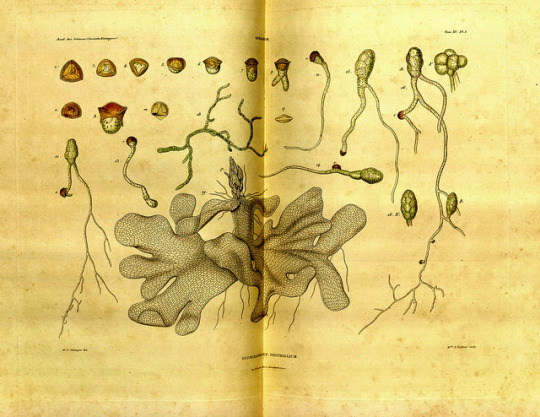

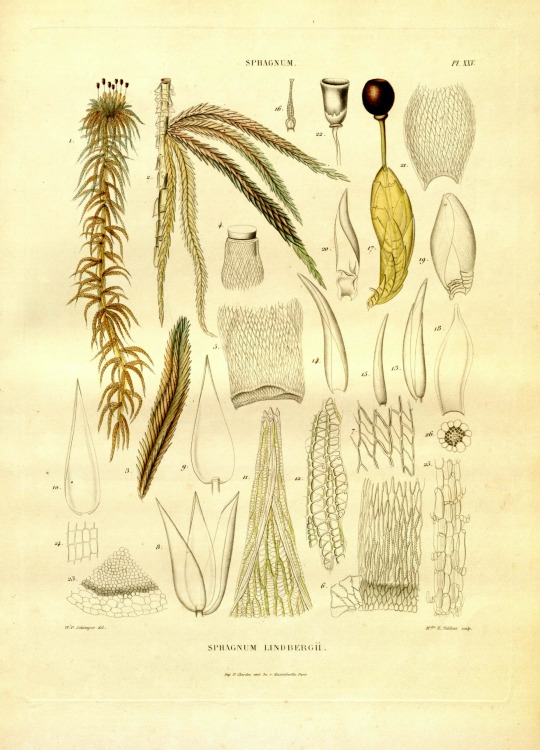
A history of development of peat mosses (Sphagnum) and a monograph of the species occurring in Europe ;By Schimper, Wilhelm-Philippe, 1808-1880,ht on Flickr.
Contributing Library:
Missouri Botanical Garden, Peter H. Raven Library
BioDiv. Library
10 notes
·
View notes
Photo
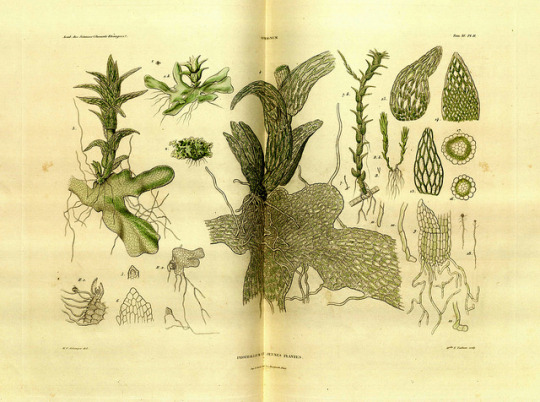
A history of development of peat mosses (Sphagnum) and a monograph of the species occurring in Europe ;By Schimper, Wilhelm-Philippe, 1808-1880,ht on Flickr.
Via Flickr:
Contributing Library:
Missouri Botanical Garden, Peter H. Raven Library
BioDiv. Library
#Musci#Sphagnaceae#Sphagnum#scientific illustration#Botanical illustration#Botany#moss#Natural history
76 notes
·
View notes
Photo

A history of development of peat mosses (Sphagnum) and a monograph of the species occurring in Europe ;By Schimper, Wilhelm-Philippe, 1808-1880,ht on Flickr.
Via Flickr:
Contributing Library:
Missouri Botanical Garden, Peter H. Raven Library
BioDiv. Library
#Musci#Sphagnaceae#Sphagnum#scientific illustration#Botanical illustration#Botany#moss#Natural history
240 notes
·
View notes
Photo

A history of development of peat mosses (Sphagnum) and a monograph of the species occurring in Europe ;By Schimper, Wilhelm-Philippe, 1808-1880,ht on Flickr.
Via Flickr:
Contributing Library:
Missouri Botanical Garden, Peter H. Raven Library
BioDiv. Library
#Musci#Sphagnaceae#Sphagnum#scientific illustration#Botanical illustration#Botany#moss#Natural history
103 notes
·
View notes